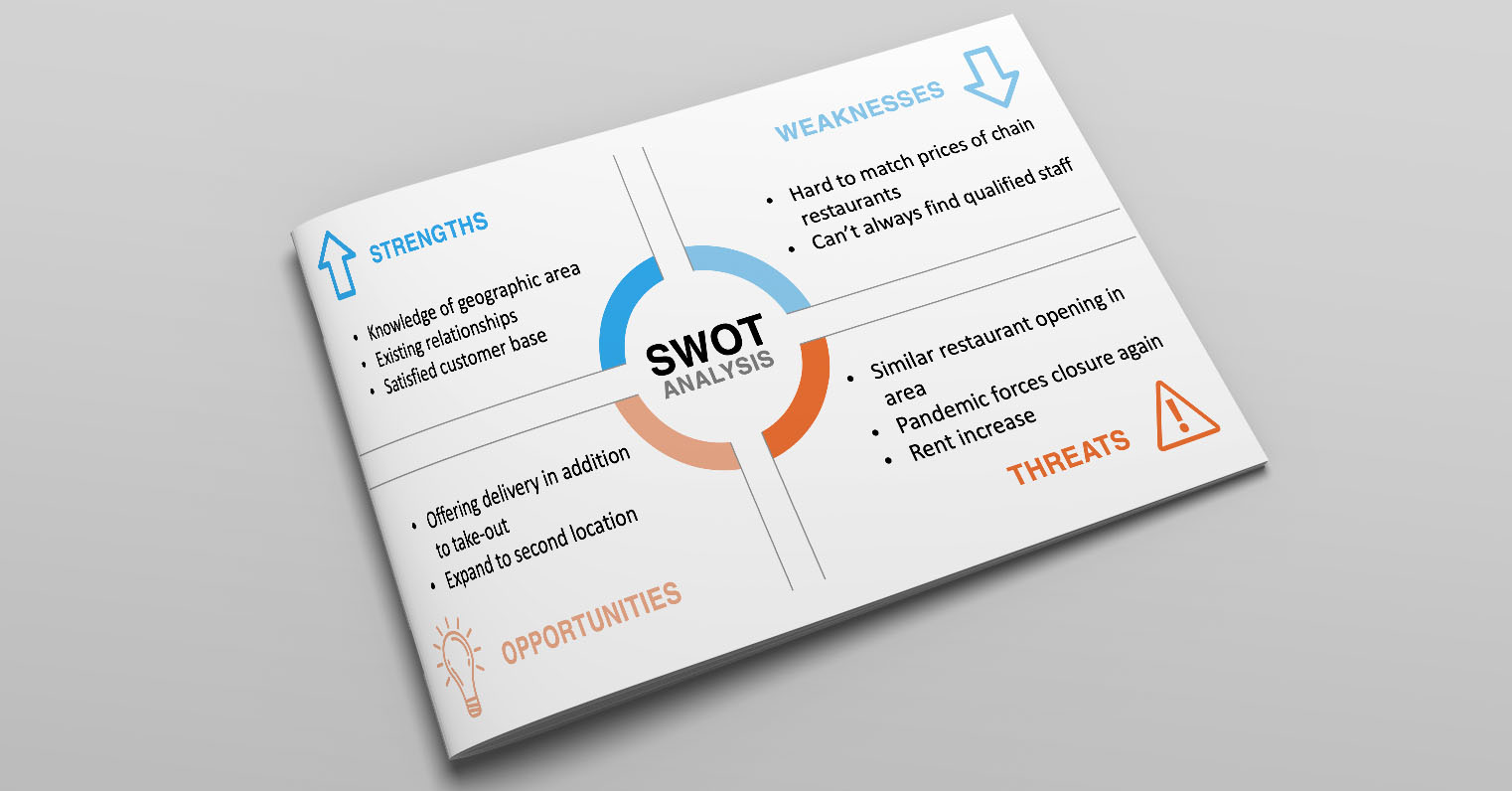What is a Strategy Meeting? Purpose, Agenda, & Best Practices

In the business world, where disruption is the norm and opportunities can be fleeting, effective organizational leadership hinges on successful strategy meetings. These structured sessions bring together key decision-makers to align long-term goals, assess current performance, and set the direction for the company.
The ability to step back, evaluate, and realign business strategy can set organizations up for sustained success. By building a culture of strategic thinking and collaboration, organizations can enhance their ability to adapt to change, seize opportunities, and achieve long-term goals.
This article examines the essentials of a strategic planning meeting, exploring its purpose, the critical components of a well-structured agenda, and practical best practices to ensure a successful strategy session that yields tangible results every time.
Main Takeaways From This Article:
- Strategy meetings focus on aligning teams, setting long-term goals, and making high-level decisions that drive the organization forward.
- Data-driven insights are essential for productive discussions, allowing leadership to evaluate performance and make informed decisions.
- Key agenda items, such as reviewing progress, setting strategic priorities, and allocating resources, keep meetings focused and actionable.
- Best practices, such as inviting the right participants, setting clear objectives, and ensuring accountability, help ensure that meetings lead to real outcomes.
- Spider Impact enhances strategy meetings by automating data collection, providing real-time performance tracking, and fostering transparency and alignment across teams.
What Is a Strategy Meeting?
A strategy meeting is a structured session where leadership teams invite key stakeholders to come together to discuss and set long-term goals, review the company's performance, and make high-level decisions. These meetings go beyond the discussions on day-to-day operations, focusing instead on shaping the company's direction and ensuring that all departments are aligned on big-picture objectives.
Why Hold Strategy Meetings?
Strategy meetings are crucial for maintaining a focus on the big picture. These meetings help business leaders:
- Align teams on long-term goals and company direction.
- Prioritize initiatives that will have the most significant impact on the organization's success.
- Make data-driven decisions, ensuring actions are based on accurate and up-to-date performance metrics.
In the day-to-day hustle and bustle of operations, it can be easy to get lost in the details. By regularly stepping back and evaluating the company's overall direction, leaders can ensure that their teams are working towards meaningful and sustainable goals.
Key Agenda Items for Effective Strategy Meetings
An effective strategy meeting relies on a well-structured agenda that keeps discussions focused and productive. Here are the essential meeting agenda items to cover in every strategy meeting to ensure alignment, accountability, and clear action steps.
Review Progress and Performance Data
A successful strategy meeting starts with a review of the organization's performance. This involves examining key performance indicators (KPIs) and metrics that highlight whether the company is on track to meet its strategic objectives. Grounding the discussion in real, data-backed insights ensures that the meeting is focused on facts rather than opinions. To facilitate this review, consider the following key points:
- Data-driven insights help identify areas of success and highlight potential challenges that need attention.
- Ensuring clear KPIs are in place helps objectively measure performance and guide discussions.
Identify Strategic Priorities Moving Forward
With performance data in hand, the next step is to establish or refine the company's strategic priorities. These discussions should focus on current trends, market conditions, and any internal challenges that could impact long-term success. Clarity is critical: everyone should walk away understanding what needs to be tackled immediately and what will drive the company forward. To ensure strategic alignment, consider the following guiding principles:
- Focusing on high-impact strategic initiatives that contribute to long-term success
- Prioritizing tasks that address the most pressing challenges or emerging opportunities
Resource Allocation and Key Decisions
Once priorities are set, it's time to discuss how to allocate resources effectively—whether time, budget, or personnel. This is also the moment for making key decisions about the next steps. Every decision should come with clearly defined responsibilities to ensure accountability and progress. To optimize resource utilization and decision-making, consider the following key points:
- Aligning resources with strategic goals can maximize their impact.
- Ensuring decisions are action-oriented can help establish clear ownership and deadlines.
Collaborative Brainstorming and Open Dialogue
Finally, strategy meetings should promote an environment of open dialogue and collaborative brainstorming. This is the time for fresh ideas and diverse perspectives. For instance, if the current marketing strategy is not achieving the desired sales outcomes, the marketing department should convene a meeting with key stakeholders to explore and identify the most effective solutions to enhance promotional efforts.
By allowing team members to voice new ideas and challenge assumptions, organizations can cultivate innovation and identify new paths for growth through:
- Encouraging active participation from all attendees to foster creative thinking
- Ensuring that all viewpoints are considered before finalizing decisions
Best Practices for Running a Successful Strategy Meeting
Running a successful strategy meeting requires more than setting an agenda—it demands careful planning, the right participants, and a focus on results. By following some best practices, you can ensure the meeting is both productive and impactful, leading to clear decisions and forward momentum.
Invite the Right Meeting Participants
One of the most important factors in a successful strategy meeting is having the right people in the room. Limit the guest list to key decision-makers and stakeholders who directly influence or implement the company's strategy. This keeps the discussion focused and ensures that the people with the authority to make decisions are present.
Additionally, involving cross-functional leaders is critical to ensuring strategic alignment across the organization. Their diverse perspectives help bridge gaps between departments and ensure that each area of the business is working toward common goals. By carefully selecting participants, you can keep strategic discussions efficient and on track.
Set Clear Objectives and Outcomes
To ensure a productive strategy meeting, it's essential to establish clear objectives beforehand. Define what you aim to achieve for each agenda item, whether it's reaching a decision, outlining the next steps, or generating new ideas. Every topic discussed should contribute directly to the meeting's overall goals, keeping participants focused on strategic priorities.
Avoid getting sidetracked by day-to-day operational details. By consistently steering the conversation toward high-level objectives, you can ensure that the meeting drives meaningful, long-term outcomes rather than short-term fixes.
Leverage Data for Informed Discussions
Data is the foundation of any effective strategy meeting. By bringing concrete numbers to the table, you can avoid speculative debates and ensure that every discussion is grounded in real performance insights. Use key metrics and KPIs to drive decisions, focusing on facts rather than opinions. This approach keeps the conversation actionable and results-oriented.
Spider Impact plays a crucial role in this process by providing real-time data and performance dashboards. With up-to-date metrics at their fingertips, leaders can quickly assess the organization's progress and make informed decisions without wasting time gathering or interpreting data. This helps the team stay focused on achieving results and addressing the most pressing issues.
Ensure Accountability and Follow-Through
A strategy meeting's success depends on what happens afterward. To ensure follow-through, assign clear action items at the end of the meeting, specifying deadlines and ownership for each task. This creates accountability, helping make sure that everyone leaves knowing exactly what is expected of them and by when.
Follow-up check-ins are also essential for maintaining momentum. Regularly reviewing progress allows the team to stay on track, make necessary adjustments, and keep moving toward the organization's strategic goals. This ongoing accountability ensures that decisions made in the meeting translate into real, impactful actions.
How Spider Impact Supercharges Strategy Meetings
Spider Impact optimizes strategy meetings by simplifying preparation, providing real-time data insights, and fostering transparency across departments. Here's a detailed look at how the platform's features enhance every stage of your strategy meeting, making it more efficient and results-driven.
Simplified Preparation With Automated Data Collection and Presentation Tools
Spider Impact reduces the manual work that goes into preparing for strategy meetings, enabling leaders to focus on making informed decisions rather than handling logistics.
- Automated Data Integration: This pulls data automatically from various sources such as spreadsheets, databases, and web applications. This removes the need for manual data entry and minimizes errors.
- Real-Time Reporting: With this, you can continuously update reports and performance metrics, ensuring that data presented in meetings is always current and accurate.
- Automated Presentation Generation: This feature creates presentation slides automatically, eliminating the time-consuming process of compiling data and building reports. Data stays synced with your system, so presentations are always up to date with the latest figures.
- Custom Dashboards: These allow you to tailor your dashboards to highlight key metrics and performance indicators, allowing you to present exactly what matters most during the meeting. This flexibility ensures that every meeting is focused on the most critical data.
With these features, Spider Impact dramatically reduces the time spent on meeting prep, so you can dedicate more time to high-level strategy discussions.
Real-Time Performance Tracking for Data-Driven Discussions
Accurate, up-to-date data is the foundation of every productive strategy meeting. Spider Impact ensures that your discussions are always grounded in real-time performance metrics.
- Instant Access to Key Metrics: Spider Impact provides immediate access to your organization's most important KPIs and performance metrics, giving you a clear view of how well your company is performing.
- Live Data Dashboards: The tool can present relevant data in real time with interactive dashboards that allow users to filter, drill down, and explore insights directly during meetings. This ensures that every discussion is backed by real, actionable data.
- Built-In Analytics: Use forecasting tools within Spider Impact to predict future trends and performance based on historical data, helping teams make more informed strategic decisions.
- Ad-Hoc Analysis: The platform allows users to perform real-time, on-the-spot data analysis during meetings to answer pressing questions or explore new insights.
By leveraging real-time data, Spider Impact enables leaders to make confident, data-backed decisions that drive the company's strategic goals.
Enhanced Transparency and Accountability Across Departments
Spider Impact breaks down silos and ensures that all departments are aligned with the organization's strategic priorities. This transparency promotes accountability, making sure everyone knows their role in executing the strategy.
- Cross-Departmental Visibility: This feature provides a unified view of performance across the entire organization, ensuring that every department is aligned on the company's overarching goals and initiatives.
- Role-Based Access Controls: This enables fine-tuned control over who can access which data. This ensures sensitive information is protected while still allowing team members access to the metrics and reports relevant to their roles.
- KPI Ownership: This feature assigns clear ownership to each KPI, ensuring accountability at every level of the organization. Team members know who is responsible for achieving each strategic objective, fostering a culture of accountability.
- Ongoing Progress Tracking: Spider Impact's performance dashboards are continuously updated to track progress toward strategic goals. Leaders can monitor the execution of decisions made in the meeting and receive automated alerts when KPIs are not met, ensuring follow-up and accountability after the meeting.
With these transparency and accountability features, Spider Impact's project management software ensures that every team member is on the same page and that strategic goals are pursued with clarity and purpose.
Elevate Strategic Planning Meetings With Spider Impact
Strategy meetings are crucial for staying focused on long-term goals, ensuring informed decision-making, and keeping all teams aligned. These sessions provide an opportunity to review progress, refine priorities, and make critical decisions that drive the organization forward. Without effective strategy meetings, it's easy for teams to lose sight of the big picture and fall behind on key objectives.
Spider Impact enhances every aspect of these meetings by providing real-time data, automating manual processes, and promoting transparency across the organization. With its intuitive dashboards, automated reports, and data-driven insights, Spider Impact ensures that leaders can focus on what matters most—making strategic decisions that align with the company's long-term goals.
By leveraging Spider Impact, your strategy meetings become more productive, data-driven, and aligned with key business objectives. The platform not only streamlines preparation and decision-making but also ensures follow-through, keeping the entire organization accountable and on track.
So, are you ready to transform your future meetings?
Book a demo of Spider Impact today to learn firsthand how it can elevate your strategic planning process.
Frequently Asked Questions
What is a strategy meeting and why is it important?
A strategy meeting is a structured session where leadership teams and key stakeholders come together to discuss and set long-term goals, review company performance, and make high-level decisions. These meetings are crucial for maintaining focus on the big picture by aligning teams on long-term goals, prioritizing high-impact initiatives, and making data-driven decisions based on accurate performance metrics. Without effective strategy meetings, organizations risk losing sight of their strategic direction and failing to achieve their objectives.
What are the key agenda items for an effective strategy meeting?
Essential agenda items for an effective strategy meeting include reviewing progress and performance data through KPIs and metrics, identifying strategic priorities based on current trends and market conditions, discussing resource allocation and making key decisions with clear responsibilities, and engaging in collaborative brainstorming and open dialogue. This structured approach ensures that meetings remain focused on strategic objectives while promoting innovation and diverse perspectives.
How can organizations ensure accountability in strategy meetings?
Organizations can ensure accountability in strategy meetings by assigning clear action items with specific deadlines and ownership, conducting regular follow-up check-ins to review progress, and maintaining momentum through ongoing performance tracking. Creating a system of accountability helps ensure that decisions made during the meeting translate into concrete actions and measurable results, keeping the organization moving toward its strategic goals.
What role does data play in strategy meetings?
Data plays a fundamental role in strategy meetings by providing concrete insights that ground discussions in real performance metrics rather than speculation. By leveraging key metrics and KPIs, organizations can make informed decisions based on facts rather than opinions. This data-driven approach keeps conversations actionable and results-oriented, helping teams identify trends, assess progress, and make necessary adjustments to stay on course toward strategic objectives.
Who should attend a strategy meeting?
Strategy meetings should include key decision-makers and stakeholders who directly influence or implement the company's strategy. This typically involves cross-functional leaders whose diverse perspectives help bridge departmental gaps and ensure strategic alignment across the organization. Limiting attendance to essential participants keeps discussions focused and ensures that those with decision-making authority are present to drive strategic initiatives forward.
How can organizations prepare effectively for strategy meetings?
Effective preparation for strategy meetings involves setting clear objectives and desired outcomes beforehand, gathering and analyzing relevant performance data, creating focused agendas that prioritize strategic discussions over operational details, and ensuring all participants have access to necessary information before the meeting. This preparation helps keep meetings productive and ensures that time is spent on meaningful strategic discussions rather than collecting and interpreting basic data.
Demo then Free Trial
Schedule a personalized tour of Spider Impact, then start your free 30-day trial with your data.






